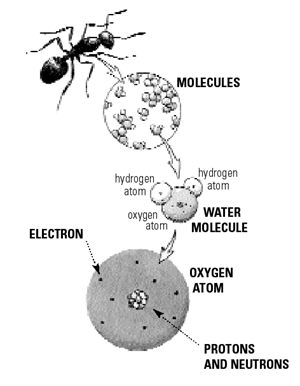The Elegant Universe
|  |
Student Handout
|
Particle Puzzle Pieces
Have you ever wondered what you are made of? How about the chair you are sitting on? Or the soda you drink? Or the stars you see at night? After many experiments, physicists have found evidence that most of the matter you see around you is made from elementary particles called quarks. How do these particles form both you and your chair? Do this activity to find out.
Procedure
You, your chair, and everything you can see are made of atoms. Atoms, in turn, are composed of protons, neutrons, and electrons. According to the well-tested Standard Model of particle physics, electrons aren't made of anything else, but protons and neutrons are made of particles called quarks.
To find out how quarks make up a proton or a neutron, read the "Quark Chart" and "Quark Recipe Rules" below. Then try to write a "recipe" to construct a proton and a neutron.

Questions
Write your answers on a separate piece of paper.
How are your quark recipes for a proton and a neutron alike? How are they different?
Electrons are particles with a charge of -1 that can occupy the space around an atom's nucleus, which
contains protons and neutrons. A neutral atom has
a net charge of 0, which means that the number of
negative electrons must equal the overall positive charge of the protons. How many electrons would
you expect to find in a neutral atom containing three
protons and four neutrons?
Quark Recipe Rules
More massive quarks are less stable than less massive quarks and quickly decay into less massive quarks.
The quarks that make up protons and neutrons are all 1st generation quarks, which include up quarks and down quarks.
Quarks never exist just by themselves. They are always found in the company of other quarks.
Any particle made from quarks must have a net electric charge that is an integer (0, 1, etc.). Protons consist
of a group of quarks with a combined charge of 1. Neutrons consist of a group of quarks with a combined charge of 0.
Your recipe for a neutron or proton should use the smallest number of quarks that result in the correct charge.

|

